WOMEN'S HEALTH
Feel like your pelvic floor isn’t what it used to be? Here are some pelvic floor exercises to help.
Let's Talk About Interstitial Cystitis and Pelvic Floor Exercises
August 19, 2025
Interstitial cystitis (IC) or painful bladder syndrome is more common than you might think! This chronic condition can make even the simplest daily activities challenging. But don’t worry, sis, because there are simple ways to manage IC symptoms and make those daily activities no longer a challenge! One of the easiest ways to manage IC is with interstitial cystitis pelvic floor exercises, and I’ll give you a couple to try, too.
What is Interstitial Cystitis?
Have you ever been shopping in Target, working out, or driving in the car when, all of a sudden, you have the intense feeling of having to urinate? Or maybe you know where all the bathrooms are in your local shopping mall or office space? If so, you may be dealing with Interstitial Cystitis or IC. Interstitial cystitis (IC) causes bladder pain and pelvic pain. It often leads to urinary urgency, frequent urination, and a lot of discomfort. The exact cause of IC isn’t clear, but it can be linked to tight pelvic floor muscles and other pelvic floor dysfunctions.
Understanding the Pelvic Floor
The pelvic floor is a group of muscles and connective tissues that support pelvic organs like the bladder, uterus, and bowel. These muscles play a massive role in bladder control, bowel function, and sexual health. When these muscles become too tight or weak, they can cause various symptoms, including those associated with IC and other pelvic floor disorders.
How Pelvic Floor Exercises Can Help
Now, ladies, you do not need to live with IC forever. Some things can help. Pelvic floor exercises are a key part of managing IC symptoms. These exercises can help relax tight pelvic floor muscles, improve blood flow, and reduce chronic pain. Some benefits of these exercises are:
- Improve Bladder Function: Strengthening the pelvic floor muscles can help you control bladder function better and reduce urinary symptoms like urgency and frequency.
- Enhance Quality of Life: Regular pelvic floor exercises can help you get back to your awesome self and enjoy daily activities without discomfort.
Reduce Pain: These exercises can alleviate chronic pelvic pain by targeting pain-triggering spots and reducing muscle tension.
Types of Pelvic Floor Exercises
Incorporating pelvic floor exercises into your routine can be a game-changer when it comes to dealing with IC. These exercises are designed to strengthen and relax the muscles in your pelvic area, providing relief from symptoms. Here are some of the best and most effective pelvic floor exercises to get you feeling amazing again!
Kegel Exercises
Kegel exercises are one of the most proven treatments for pelvic floor dysfunction. They involve tightening and relaxing the pelvic floor muscles to build strength and improve control. Here’s how you do them:
- Identify the Right Muscles: To find your pelvic floor muscles, try stopping your urine midstream. These are the muscles you’ll be working.
- Tighten and Hold: Tighten these muscles for 5 seconds, then relax for 5 seconds. Repeat 10-15 times.
Consistency is Key: Do these exercises several times daily for the best results.

Diaphragmatic Breathing
Diaphragmatic or deep breathing helps relax the pelvic area and reduce muscle tension. It’s a simple but very effective relaxation technique.
- Find a Comfortable Position: Lie down on your back with your knees bent.
- Breathe Deeply: Place one hand on your lower abdomen and the other on your chest. Inhale deeply through your nose, allowing your abdomen to rise.
Exhale Slowly: Exhale through your mouth, letting your abdomen fall. Repeat for 5-10 minutes daily.

Stretching and Yoga
Incorporate gentle stretching and yoga into your routine to help with muscle relaxation and blood flow in the pelvic region.
- Child’s Pose: This pose helps stretch and relax the pelvic floor. Kneel on the floor, sit back on your heels, and stretch your arms forward, lowering your chest to the floor.
- Pelvic Tilts: Lie on your back with your knees bent and feet flat on the floor. Tighten your abdominal muscles and tilt your pelvis upward slightly, then release.

When to Seek Help from a Physical Therapist
If you find that your symptoms continue despite doing these exercises, there are treatment plans, and it might be time to see a pelvic floor therapist. A physical therapist specializing in pelvic floor therapy can create a personalized treatment plan based on your individual needs and medical history. Some insurance companies even cover specialized pelvic floor therapists. They can also help with techniques to address specific issues like trigger points and muscle tension.
Lifestyle Changes and Other Treatments
In addition to pelvic floor exercises, lifestyle modifications can play a big role in managing IC. Here are a few tips:
- Eat a healthy diet and stay hydrated to help with bladder symptoms.
- Use relaxation techniques like deep breathing and meditation to manage stress, which can exacerbate IC symptoms.
- Work on bladder training techniques to increase bladder capacity and reduce the frequency of urination.
Pelvic health is women’s health, and dealing with interstitial cystitis can be rough. But incorporating pelvic floor exercises into your routine can make a big difference. Remember, every woman’s body is different, so finding what works best for you might take some time.
The 7-Day Hormone Challenge
Instantly access actionable steps and data-driven strategies to conquer hormonal imbalance and gain quick wins day by day!
The Ultimate Hormone Assessment
Understand your hormonal imbalance type with our signature 48-question quiz, designed to uncover the root of your symptoms!
The Madame Estrogen Mastermind
Access a comprehensive solution to say goodbye to your hormonal imbalance!
The Hormone Wellness Network
Embody hormone harmony. Unleash your inner wonder woman — masterclasses, accountability, sisterhood, access to Doctor P, and more!




